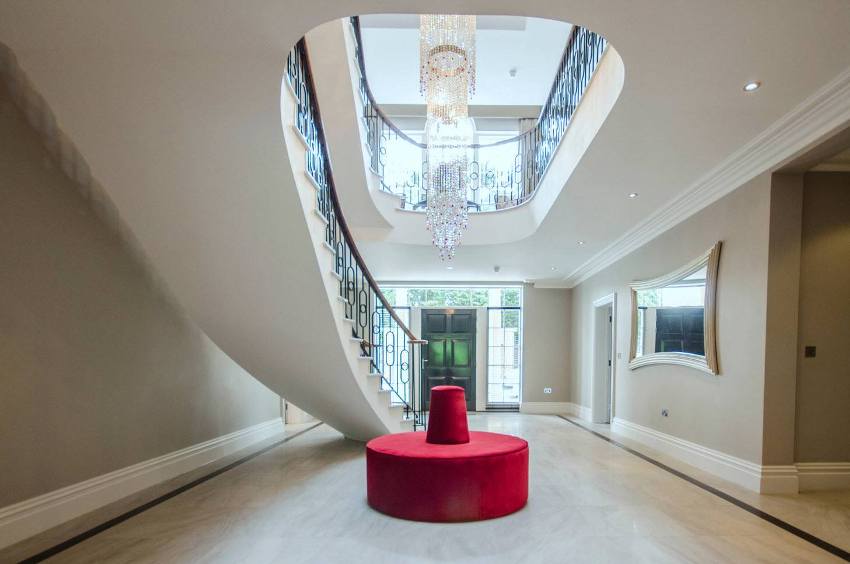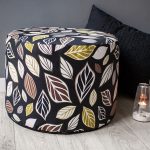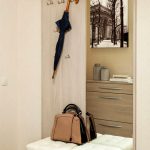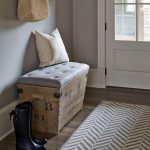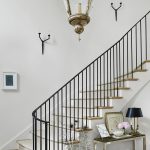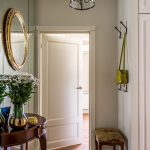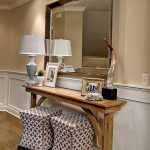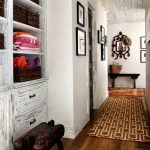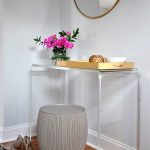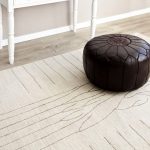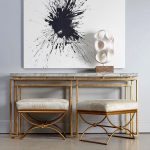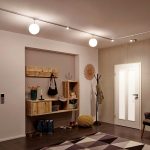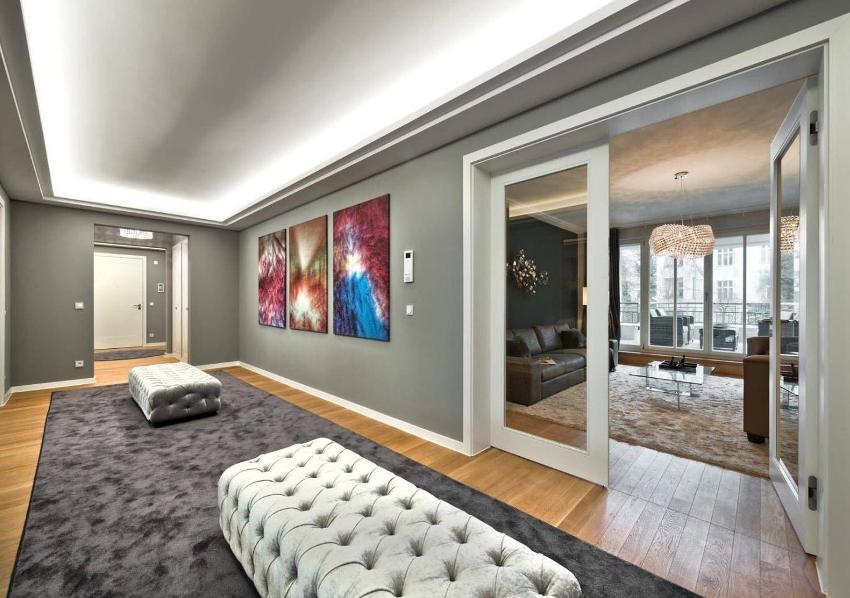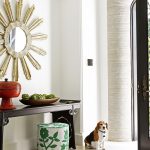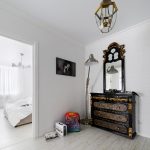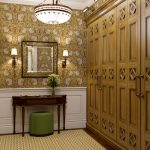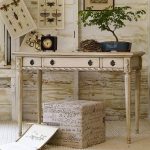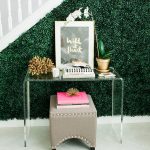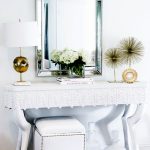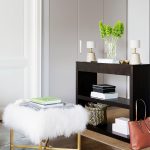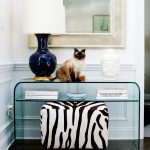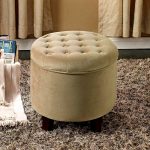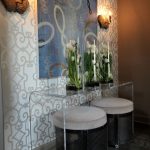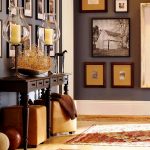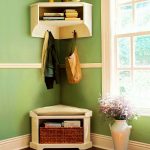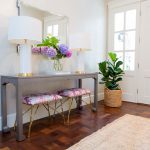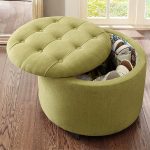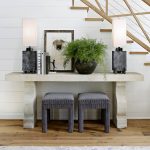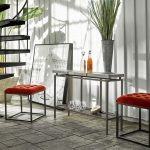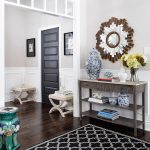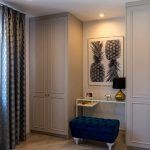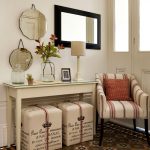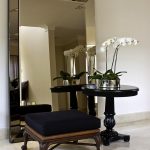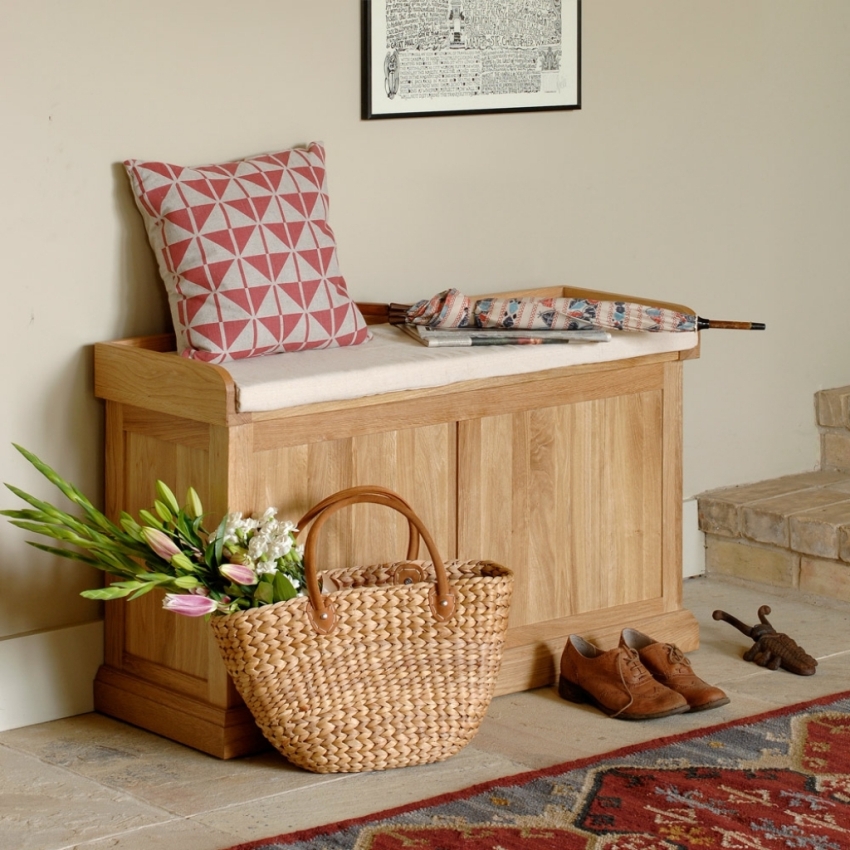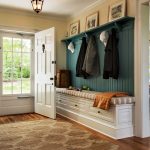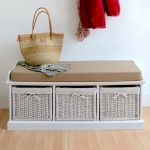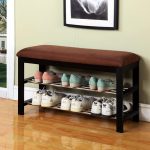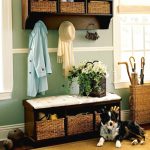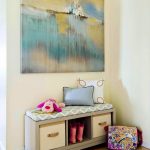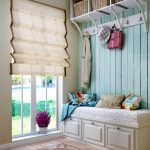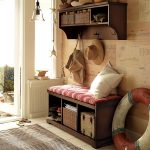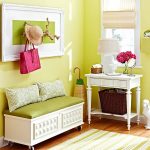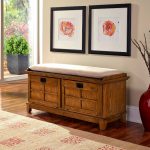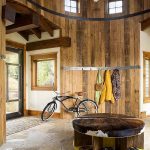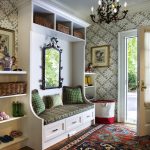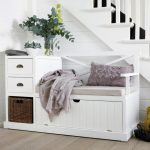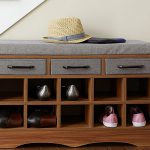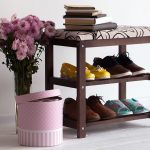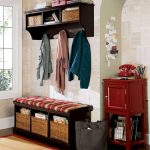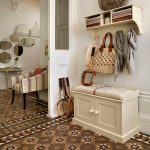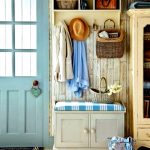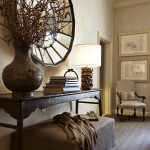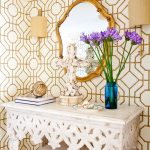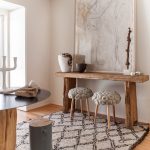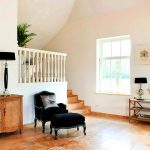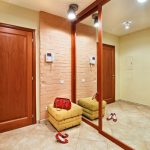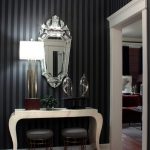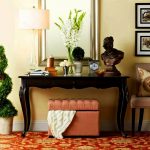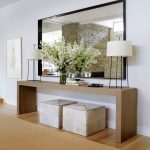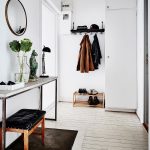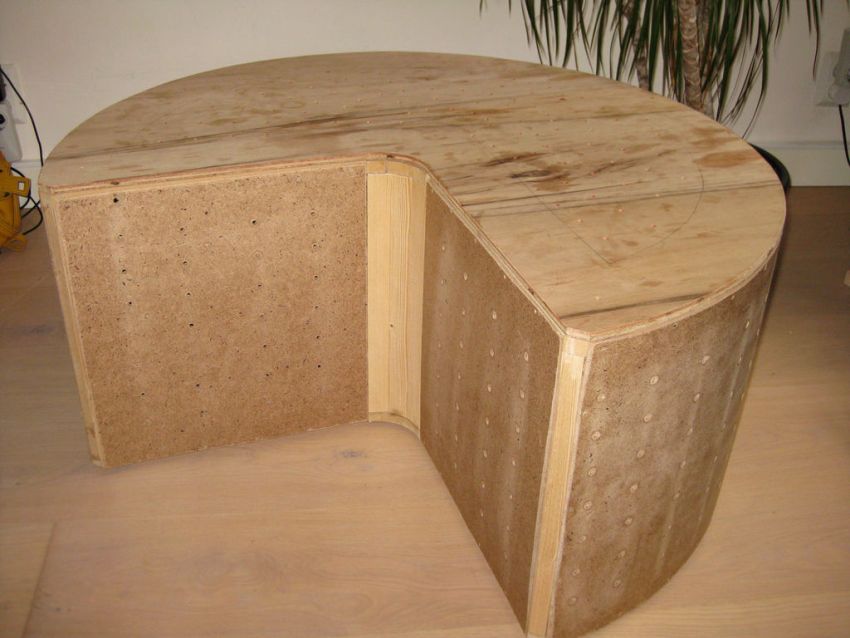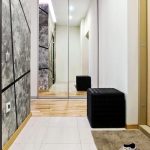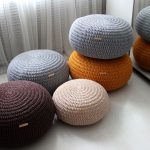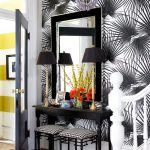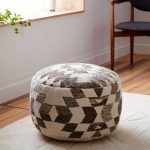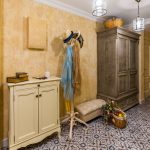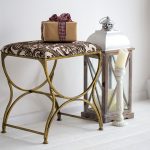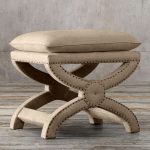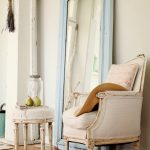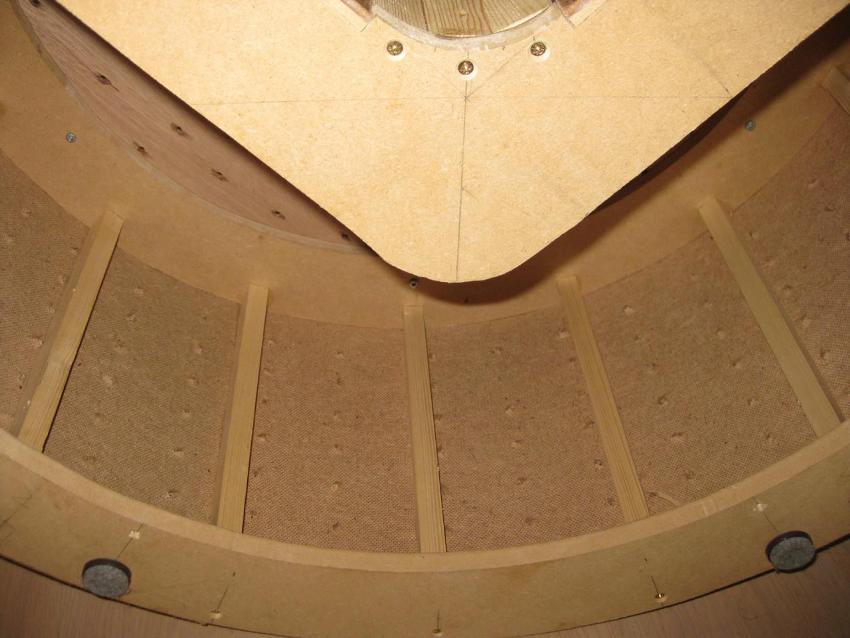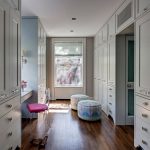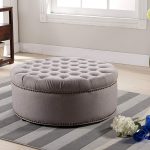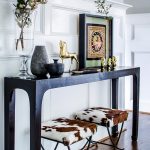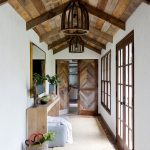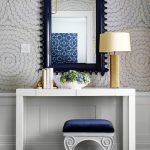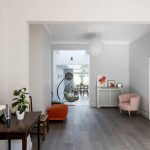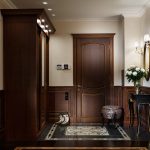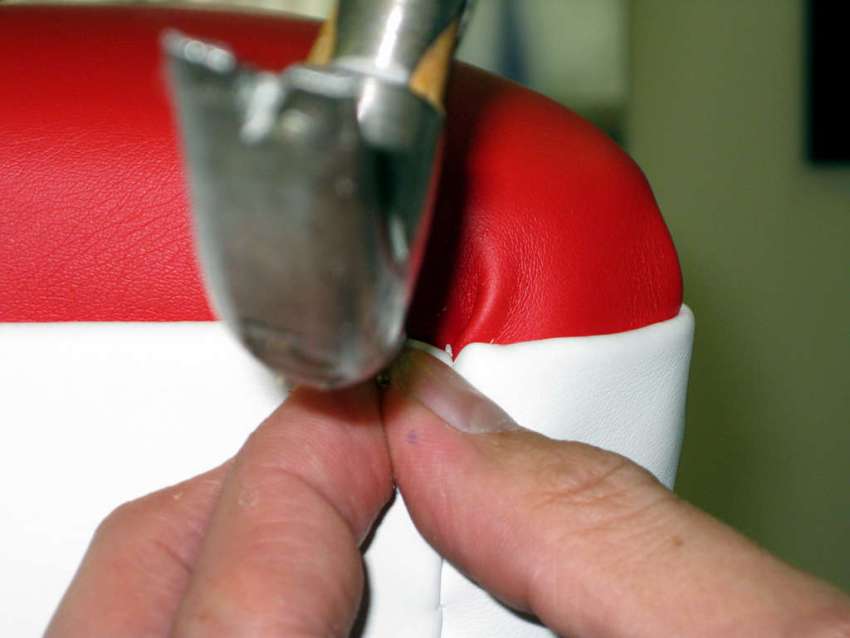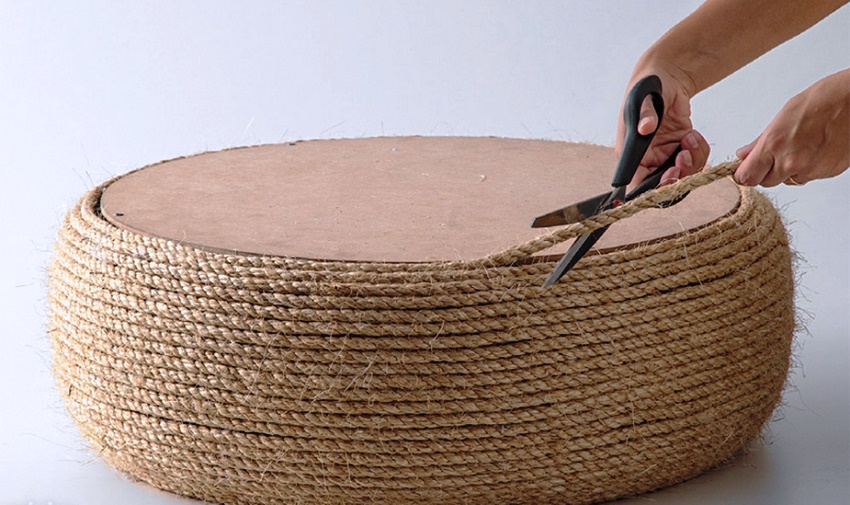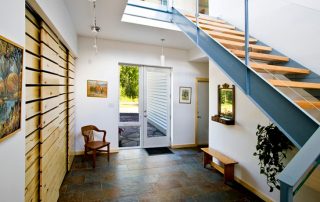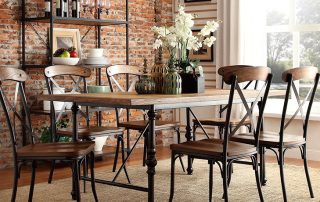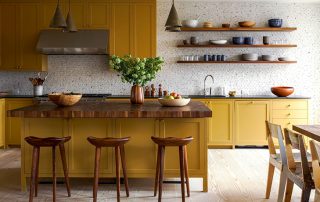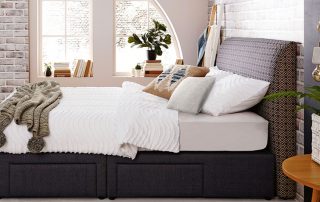For the interior of the hallway, harmony is as important as for the entire living space. This is not easy to achieve, because the functional component of this part of the apartment often prevails over the other characteristics. However, you can find an original way to rectify the situation if you install an ottoman in the hallway, placing an aesthetic and practical load on it.
Content [Hide]
- 1 Poufs and banquets in the hallway: design features and purpose
- 2 Ottoman in the hallway: the main criteria for choosing a model
- 3 How to choose poufs in the hallway for different interior styles
- 4 Variants of popular models of ottomans for the hallway: shape and practicality
- 5 DIY poufs: classic models and options for creativity
- 6 How to make an ottoman with your own hands in the hallway with storage space
Poufs and banquets in the hallway: design features and purpose
Any of the furnishings in the house has its own purpose. The main function of a pouf is to create comfort. It is not the main type of hallway furniture, such as a wardrobe or a clothes hanger, but its appearance in a room where there is always a lack of free space can be appropriate and useful.
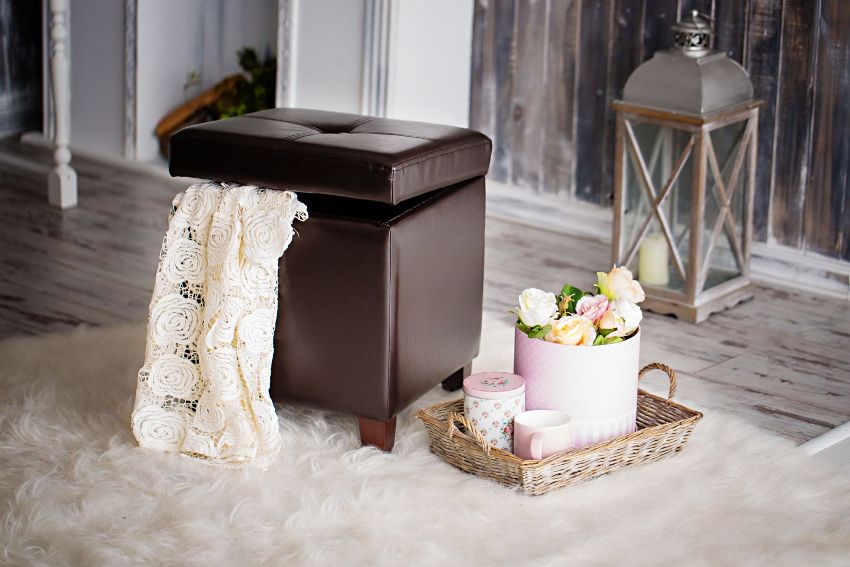
If you choose a pouf for the hallway, it is recommended to pay attention to products with leather upholstery
A pouf is a type of upholstered furniture made without a back and armrests. It has a stable, uncluttered design with a seat for one person. The bench is practically the same pouf, but with an increased seating area, it can be additionally equipped with soft or hard armrests and a back. Therefore, if there is a question about choosing between ottomans and banquets in the hallway, the decision directly depends on the area of the room and the desired comfort.
The ottoman differs from standard furniture designed for seating in a small height - usually 40-45 cm.The width and depth can vary from compact 30-40 cm to more comfortable 50-60 cm. The relative simplicity of the design of this piece of furniture allows you to make it yourself. choosing the required materials.
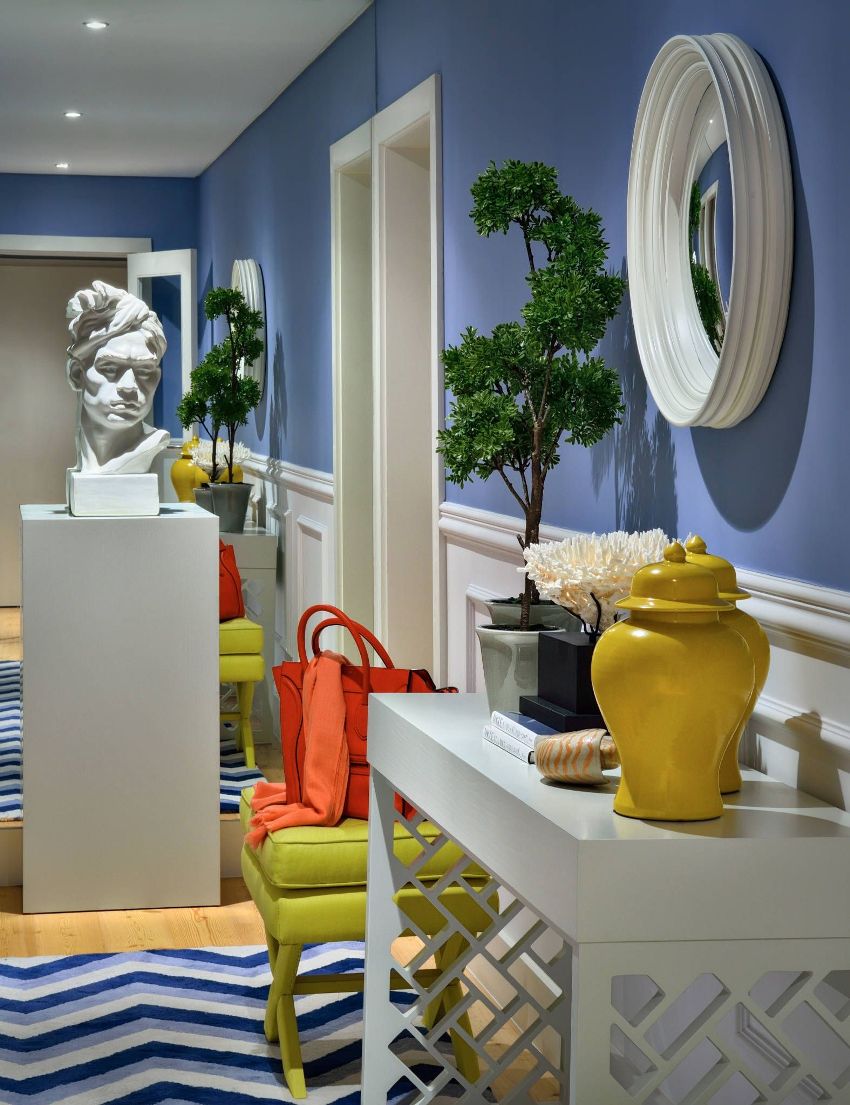
Poufs are completely independent units of furniture, and can be used both to create comfort and to place bright design accents
The pouf in the corridor is multifunctional for its purpose. It can be used as a bedside table for temporary placement on the outside of bags, hats and other items.The internal volume of the product will also be useful if the design includes a storage box, pull-out shelves for shoes and pockets for small things. It will be comfortable to put on shoes, especially for the elderly and children.
Ottoman in the hallway: the main criteria for choosing a model
The entrance hall is a very high traffic area. Therefore, the choice of furniture for it should be approached responsibly.
When purchasing an ottoman in the corridor, you must take into account that it must meet the following criteria:
- to be sufficiently reliable, which is very important in conditions of constant operation;
- provide usability;
- combine functional and practical purpose, especially if the space allocated for its placement is limited;
- harmoniously fit into the overall style of the interior.
Photos of ottomans for the hallway represent a wide variety of options for the execution of this piece of furniture. Furniture factories and private firms offer a wide range of models. The shapes, sizes and materials used for their manufacture are very diverse. This allows you to organically fit these products into rooms decorated in various styles. However, the main thing that you need to pay attention to when choosing this piece of furniture is the parameters of the room and the location of the main pieces of furniture in it.
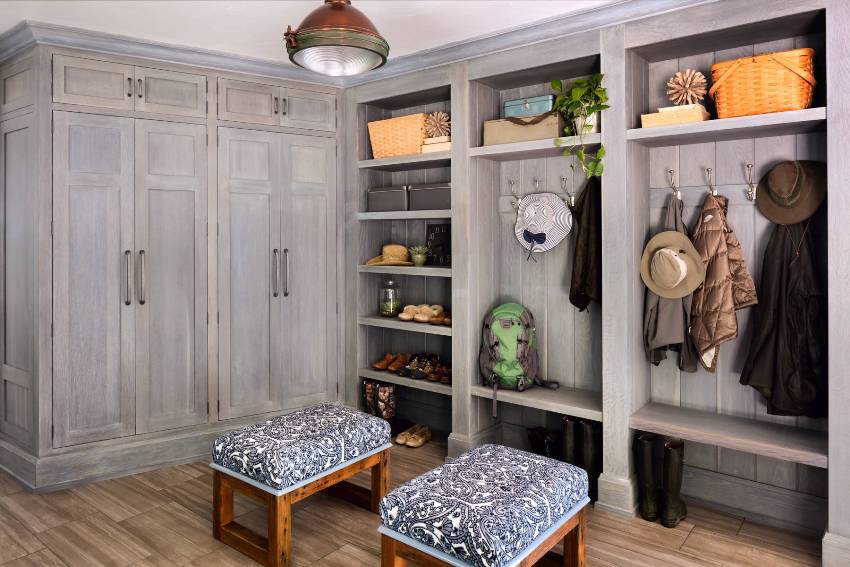
The hallway pouf can play several roles at once, the main one is the place to take off your shoes when you come from the street
The ottoman should not obstruct the passage and limit the opening of the entrance doors or cabinet doors. If the corridor is narrow and there are small children in the house, then it is advisable to think over a safe form that does not contain sharp corners in the structure. The quality of the upholstery material will affect durability and appearance, which is especially important with pets.
Useful advice! When choosing an ottoman, you should consider the type of flooring in the hallway. For laminate flooring it is recommended to purchase products without legs, for carpet - with roller wheels, for tiles - all types, except those equipped with a forged frame.
How to choose poufs in the hallway for different interior styles
The hallway is the hallmark of the apartment. It is important to preserve the general orientation of the interior style, therefore, when choosing an ottoman, you should take this into account, even if the model is used as a comfortable furniture accent. For a particular stylistic direction, characteristic features can be distinguished that facilitate the purchase of a ready-made pouf or an order for its manufacture.
The design of an ottoman for a classic interior is limited by the shape and choice of material. The presence of a tree in the frame is mandatory. Models with legs can have carved elements that echo the pattern of the general furniture composition. For upholstery, it is appropriate to use leather as the most wear-resistant, strict and "official" material, but velvet and velor seat options are not excluded. They will not be so practical, but they are quite applicable as a refreshing element of the interior of the hallway.

Poufs, ottomans, banquets - all these small pieces of furniture will perfectly fit into the interior in any style
The baroque style is obliged to emphasize luxury and grandeur. Therefore, chic models with dense intricate carvings, an abundance of decor, suede or velvet upholstery should be considered first. Strict leather poufs or geometrically correct banquets will be inappropriate in this style.
The high-tech stylistic direction fully allows the use of poufs, but you will have to forget about their classic performance. The main element is arched metal legs with chrome-plated mirror or matt surface. Textiles with a pattern or nap are excluded for seat upholstery - artificial or natural leather is preferable.
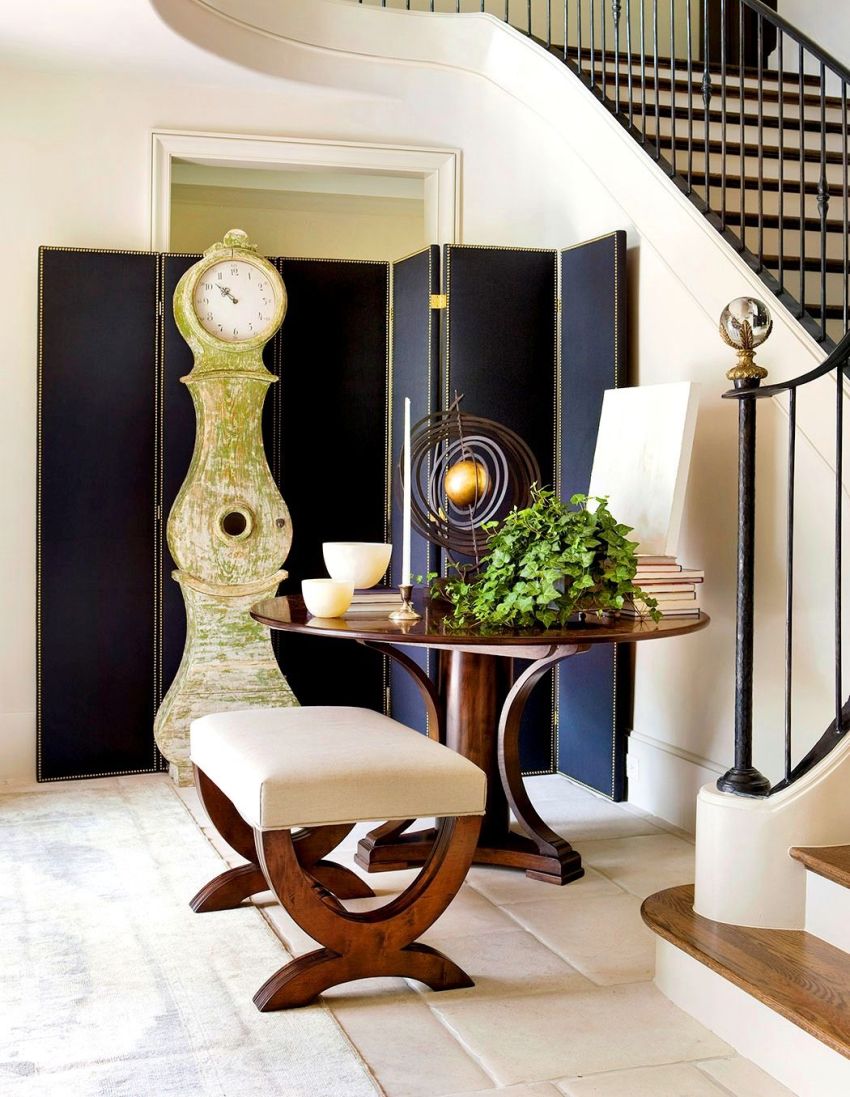
Models of poufs with legs can overlap with other furniture, creating an excellent ensemble in the interior
A small ottoman in the hallway is appropriate in the style of minimalism. It can be round, cylindrical or cubic. As for the color scheme, in this case, options are allowed that are made to match the furniture or used as a contrasting accent with a monochromatic range of upholstery material. Any decorative elements are missing.
A corridor bench with a soft top and a frame made of hevea or rattan fits well into the eco style. The popularity of this trend allows you to choose extraordinary models of ottomans. Photos of their manufacturing options can be found in specialized furniture catalogs, where products of various sizes are presented, made from different materials.
Useful advice! For interiors that provide for a modern design, a mixture of several styles is permissible. When placing accents, you can choose a model with a non-standard shape or with contrasting upholstery.
Color palette poufs for the hallway: "Stealth" or contrast
Light upholstery of upholstered furniture is good not only in a Scandinavian interior. It is capable of expanding the hallway space, will look good in this rather dark part of the apartment and is applicable to almost any modern interior design. It should be borne in mind that in the hallway the pouf will be used intensively, its contact with outerwear and shoes is inevitable, so the upholstery material should take into account these nuances. When purchasing a white ottoman in the corridor, it is recommended to choose a product with natural or artificial leather upholstery, which is easy to clean. Light colored fabric upholstery is only acceptable as a removable cover.
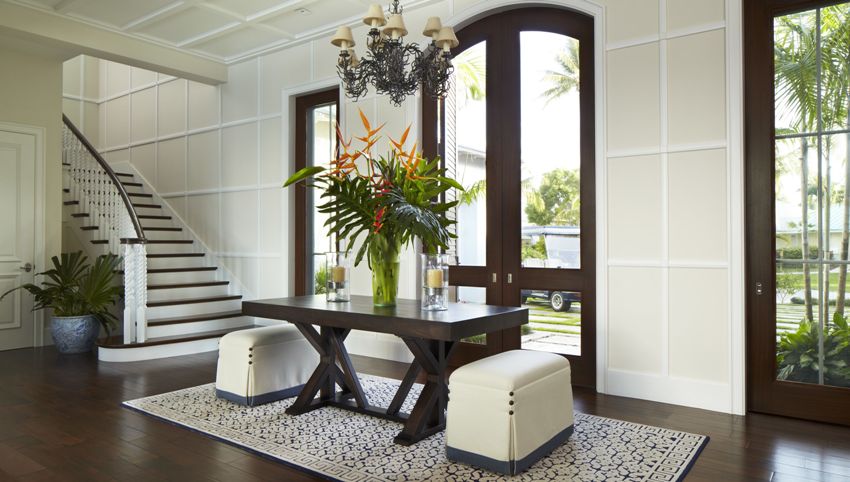
If a modern ottoman is chosen for the hallway, then you should give preference to small, compact models.
The color of the ottoman can be matched to the main furniture ensemble. For classic interiors and country style, shades of natural colors are characteristic: beige, milky, brown. When using an ottoman as an accent, it is possible to use light tones of green, yellow, blue or peach. Leather or textiles are used for upholstery.
Related article:
Bench in the hallway: a convenient and multifunctional element in the hallway
Varieties of benches for the corridor. Materials used for the manufacture of banquets. Review of popular models. Do-it-yourself bench.
The hi-tech style is interesting with accents and contrasts, so bright colors are acceptable and desirable here. Orange, red, green, black tones in combination with metal and the right shape in the hallway will look quite original.
Possible in the interior of the hallway ottoman in several colors. It is possible to combine 2-3 colors in the frame or upholstery. This will allow you to maximally adapt the product to the chosen style or highlight it with a contrasting color spot.
What materials are used in the manufacture hallway ottomans
The body of benches and ottomans can be made of the following materials:
- solid wood (expensive, durable, environmentally friendly, beautiful);
- natural or artificial veneer (retains all the advantages of natural wood, but costs less);
- metal (strong, durable, easy maintenance, heavy weight of products);
- chipboard, MDF, multilayer plywood (affordable price, average service life, water resistance);
- vines, giveas, rattan (high strength, durability, require special care);
- plastic (lightweight, durable, various shapes, high fragility).
The choice of upholstery material depends on the preferences of the owners of the room, and is also determined by the style of the interior.It can be natural or synthetic fabrics specially designed for upholstery, natural leather, eco-leather. Modern furniture fabrics are represented by a wide selection of textures with imitation of natural materials, which are characterized by durability and ease of cleaning. Special weaving "anti-claw" will be relevant for pet owners.
Velvet and velor look stylish as an upholstery material, but their care is difficult; with intensive use, the fabric wears out quickly. Jacquard, silk, fabrics with pile, appropriate in the bedroom and living room, in the hallway is irrational to use. If you want to have a pouf with a velvety and soft surface in the hallway, you should choose flock upholstery. This material has high wear resistance parameters, is easy to clean and is practically not subject to abrasion.
A leather ottoman is ideal for a hallway. It is suitable for interiors of premises of various styles, it can have different shapes and colors. Simple maintenance, long service life, the use of natural materials affect the price of products, for some models it is quite high.
Useful advice! When buying an ottoman, you need to pay attention to the seams of the upholstery and the stitching: the seams should be even, and the thickness of the threads should correspond to the density of the upholstery fabric.
Foam rubber, synthetic winterizer, polyurethane foam, holofiber, felt can be used as a filler. In one and the same product, a combination of several fillers is allowed, for example, different for the side surfaces and the seat.
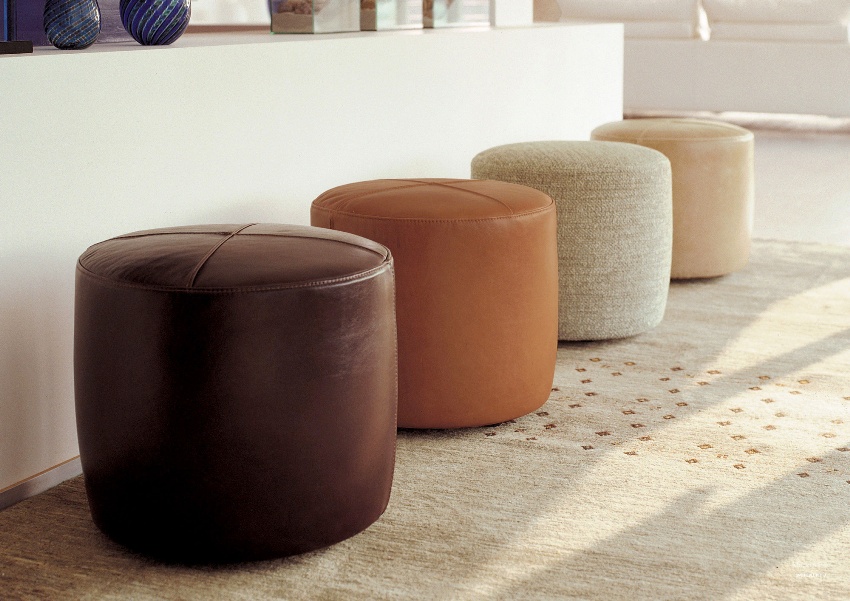
The body of ottomans can be made from a variety of materials, most often starting from the stylistic direction of the room
Popular models options hallway ottomans: form and practicality
The variety of ottoman shapes allows you to adapt them to any area of the corridor. Oval, round, rectangular, cubic models are the most popular options, but there are other types of products. A corner ottoman will just be a godsend for the hallway, especially if there is empty space in the corner. The triangular model can be free-standing or built into a composition with a hanger.
A hanger with an ottoman in the hallway is one of the win-win options for arranging furniture in the corridor. Such a set can be free-standing components or have a one-piece structure, where the pouf will be a built-in additional part. The frame can be wood or metal (depending on the overall style). The upholstery of the pouf is chosen to match the furniture or in contrast to the color of the walls.
Saving space: ottomans in the hallway with storage box
The most common models of poufs in the corridor are in the shape of a cube, cylinder or parallelogram. They are installed on casters, small feet or directly on the floor. Most often, these ottomans in the hallway are leather (due to the practicality of the upholstery material). Additional convenience of their use lies in the volumetric storage space organized inside the seat.
The seat in such models has a removable cover design. A lifting opening mechanism is installed inside, hinges are screwed on, or the seat is removed completely. In the case of the removable version, the upper part of the pouf has the same width and depth as the lower part.
A design is possible when the upper element is slightly larger, then it is put on the lower part like a lid with a snug fit. Oval and round models can be equipped with a lid with a diameter smaller than that of the body. It is made with a lifting loop, which is necessary for the convenience of using the storage.
How to combine ottoman in the hallway with a shoe box
The entrance hall is the part of the apartment where it is necessary to provide a place for outerwear and shoes.An ottoman for shoes in the hallway can be an acceptable option in the limited space of the corridor. This storage location will allow you to close several pairs of shoes from prying eyes. It will be convenient to place shoes here that are designed for everyday wear.
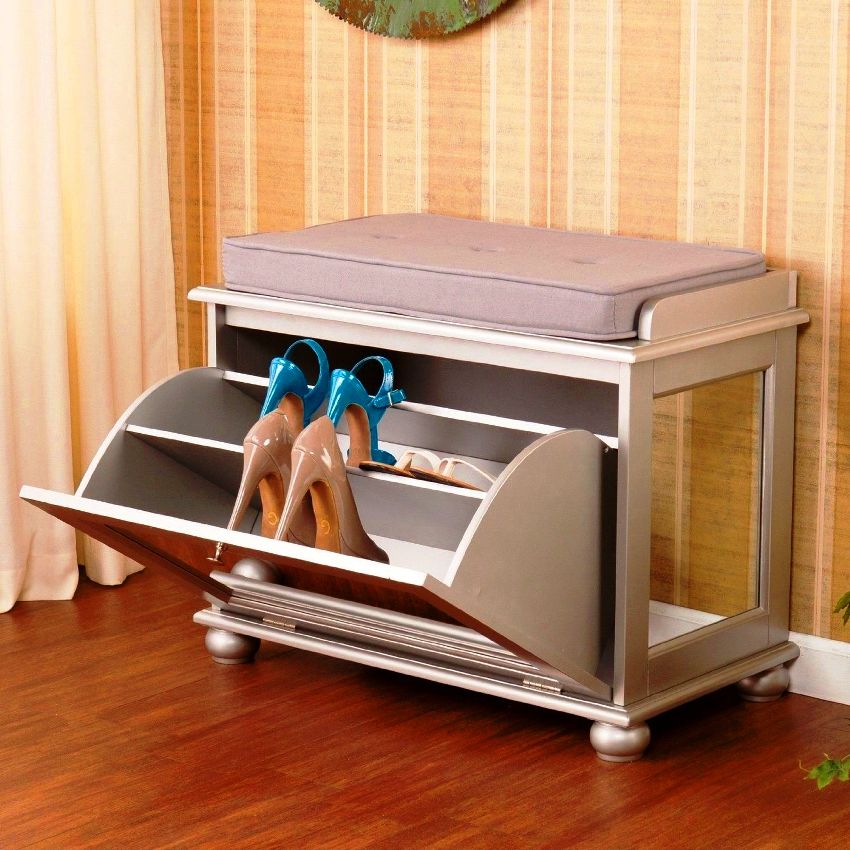
If you buy a model of a pouf with an opening lid, then you can place the items necessary in the hallway in it, hiding them from prying eyes
Boxes for storing shoes are equipped with different opening systems. These can be conventional deep pull-out compartments of front horizontal opening, separated by partitions or without them. A modern mechanism with a folding system will make it possible to neatly and compactly place shoes in separate compartments. Due to the installation of shoes at an angle, the design does not require additional depth of the frame, which allows you to keep the pouf compact.
In models of ottomans with built-in shoe boxes, the seat is usually made in the form of a removable mattress or hard cushion.
Simplified storage option: bench in the hallway with seat and shelf for shoes
A comfortable seating position in the hallway can be additionally equipped with one or more shelves for shoeswhich can be located at different levels. This is a variant of an ottoman, adapted for the hallway, where a book or magazine rack is converted into a shoe storage. The frame for such products is made of wood or its derivatives, as well as metal.
Depending on the type of frame, the ottoman in the hallway with shoe shelves can have open or closed side walls. The open type is typical for the frame of a forged ottoman or a bench with a back. The shelves are made of forged rods arranged in parallel. Shoes in this version can be stored open or use stylized boxes, where the entire range is neatly hidden from prying eyes.The wooden frame type offers more options for decorating the shelves. Open spaces are used here, where shoes are placed in easy access or packed in containers. However, you can provide hinged doors and close all the contents, organizing a kind of cabinet.
DIY poufs: classic models and options for creativity
Poufs are constructively simple enough. Their cost in the store or when custom-made can be high. Therefore, if you have certain skills and suitable materials, you can make an ottoman in the hallway with your own hands.
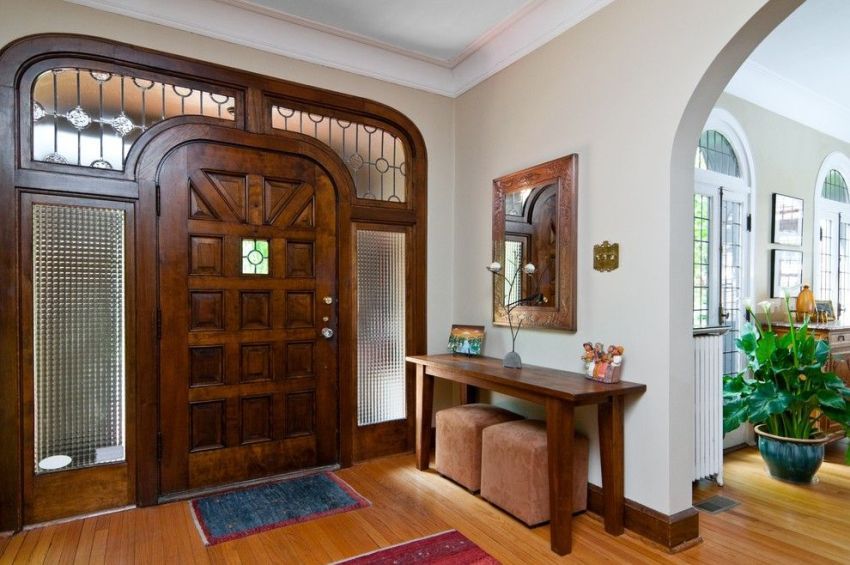
It is easy to make a pouf for the hallway with your own hands from different materials, significantly saving on the purchase
Before starting to manufacture, it is necessary to measure the premises and determine the location of the future product. Thus, the dimensions, shape and type of model are outlined. If you have any difficulties, you can look on the Internet for photos of ottomans in the hallway, where examples of their installation in rooms of different sizes and different stylistic design are given.
You can make soft or hard ottomans with your own hands. Models with a rigid or semi-rigid filling are optimal, since it is convenient to sit on such a product or change shoes.
The following materials are used for making the frame:
- MDF boards;
- plywood sheets;
- wooden boxes or pallets;
- old car tires;
- plastic bottles.
How to make do it yourself ottoman in the hallway with storage space
To create a basic model of an ottoman in a hallway with a storage box, you will need the following materials and tools:
- MDF or plywood sheet with a thickness of at least 10 mm;
- wooden beam with a section of 44x41 mm to create stiffeners of the future product;
- fabric for upholstery (at the discretion of the owners, but it is better to take furniture - it is stronger);
- sheet foam rubber;
- stapler and staples for upholstery;
- jigsaw, screwdriver, screwdrivers;
- roller wheels (4 pieces) and fasteners for them;
- self-tapping screws for fastening frame parts;
- marker;
- glue.
Suppose that the dimensions of the ottoman in the hallway are as follows:
- height - 440 mm;
- width and depth - 410 mm.
Stages of designing an ottoman:
- 4 rectangular blanks are cut out from a sheet of MDF 44x41 cm. These will be the side edges;
- for the bottom and lid of the product, you will need 2 squares measuring 41x41 cm. They also need to be cut from an MDF sheet;
- the timber is cut into 4 equal parts 44 cm long. The cuts correspond to the height of the side edges. In this example, this is 44 cm;
- the side walls should be screwed to the edges of the timber with self-tapping screws, placing them as far as possible end-to-end at the corners formed;
- you want to attach the bottom to the finished side faces. You do not need to fix the cover, because it will be removable. The main frame is ready;
- for sheathing, you need to cut out 2 cuts of foam rubber - for the frame and cover. To trim the side part, you need a piece of 44x164 cm, which is attached to the frame with glue. For the seat, a cut of 41x41 cm is needed, and the height of the foam layer should be at least 10 cm for the seat to be comfortable. If the material is thinner, then you should make 2 cuts of the foam filler, putting them on top of each other and gluing them together and the lid frame;
- cuts from the upholstery fabric are cut out taking into account additional seam allowances. Before cutting the fabric, you need to measure the perimeter of the side part with the foam rubber fixed to it - this will be the length of the cut, plus 1-1.5 cm must be added to the seam allowances. The width of the cut of the upholstery is equal to the height of the ottoman (44 cm), to which you need to add 5-6 cm for the fold at the top and bottom;
- then you need to sew a cut along the side seam and pull it over the finished frame;
- allowances are wrapped inward and overlapped to the bottom, fixed with a stapler;
- You can arrange the seat in two ways: sew a removable cover or cut out a piece of upholstery fabric that matches the size of the cover, taking into account the hem allowances;
- after completing the upholstery, screw the roller wheels to the bottom of the ottoman;
- the inner surface of the box should preferably be varnished.
Useful advice! The design of the ottoman will be stronger if, at the stage of mounting the side faces to the timber, the joints are glued and then secured with self-tapping screws.
This model has several manufacturing options:
- abandon roller wheels and replace them with small legs;
- the box cover can be made with a lifting mechanism or fastened to the frame with a pair of window hinges;
- cover upholstery not using a stapler, but decorate with decorative furniture nails.
Exclusively and cheaply: hallway pouf from scrap materials
Not possessing a sufficient level of carpentry skills, you can make an excellent ottoman with your own hands. Photos of such models are available on the Internet at various sites. Not all designs are applicable for the hallway due to the lack of a rigid frame, however, several options can be adopted.
The easiest way is to make from two old car tires. They are pre-cleaned and dried well. You will also need 2 circles - for the bottom and the seat. They are cut from MDF or plywood at least 1 cm thick. The diameter of the circles should be 2-3 cm less than the diameter of the tires. Initially, you need to fasten the tires together with self-tapping screws or bolts and nuts. Then you need to fix the lower and upper parts with 6-8 screws or self-tapping screws on each side.
The frame is wrapped with foam rubber on the sides and from the side of the seat. It is required to sew a cover of the appropriate size and fasten it to the bottom of the pouf. The cover can be made of fabric or knitted with a large pattern - in this case, exclusivity is guaranteed.

Having cut a sheet of plywood based on the contour of the tire and attaching it, you need to lay the twine in shape
If you take a linen cord or thick sisal rope and use a glue gun to fix it over the entire surface of the tires, you get an eco-style product. The finished model is varnished at the finishing stage. The pouf can be completed with low legs.
A small ottoman can be made from plastic bottles. You will need 14 2-liter or 1.5-liter empty containers of the same shape in the amount of 14 pieces with tightly screwed lids. The container must be connected with tape, wrapping several times around the bottles: 2 blanks from 2 bottles, 2 blanks from 3 bottles, 1 blank from 4 bottles. The blanks are put together and connected into a single whole with the help of scotch tape, having completed several turns for reliability.
The resulting bottom of the frame is measured, 2 identical ovals are made of plywood in size - for the bottom and the seat. It is necessary to secure them to the frame with double-sided tape. The frame is covered with foam rubber on the side and on the side of the seat, the joints can be sewn. A cover is made and pulled over the frame.
Important! A product made of plastic bottles can withstand a load of up to 70 kg.
The size of a pouf made of plastic bottles can be varied in diameter, increasing the number of containers used.
An entrance hall with an ottoman for seating gains coziness and convenience. Having chosen the right model, you can use the pouf not only as a decorative element, but also as an additional storage system, which is important for small-sized rooms. The furniture market presents a wide range of models of ottomans of various shapes, sizes, shades. However, if you wish, you can always make such a furniture accessory yourself, resulting in an excellent exclusive option.



